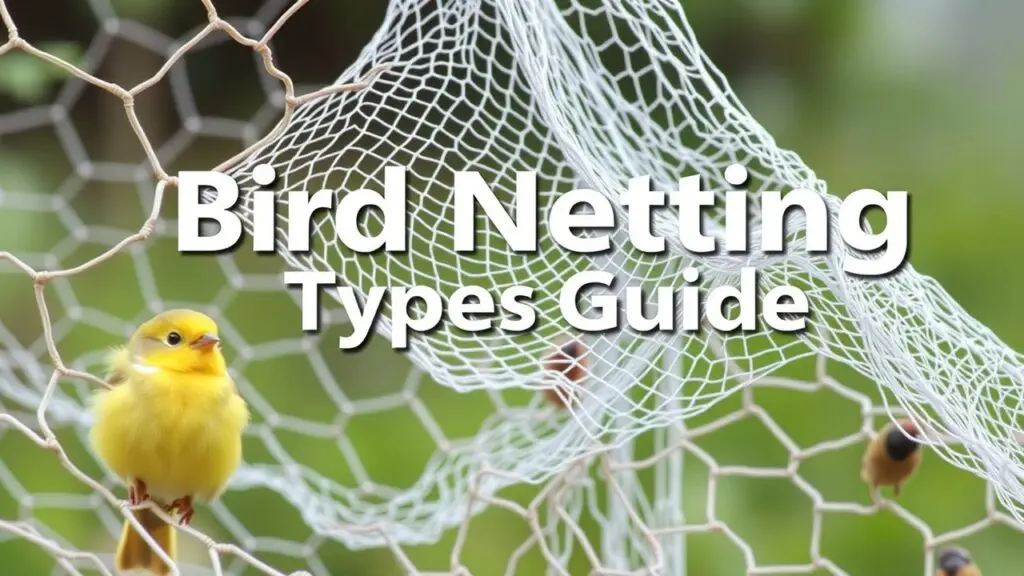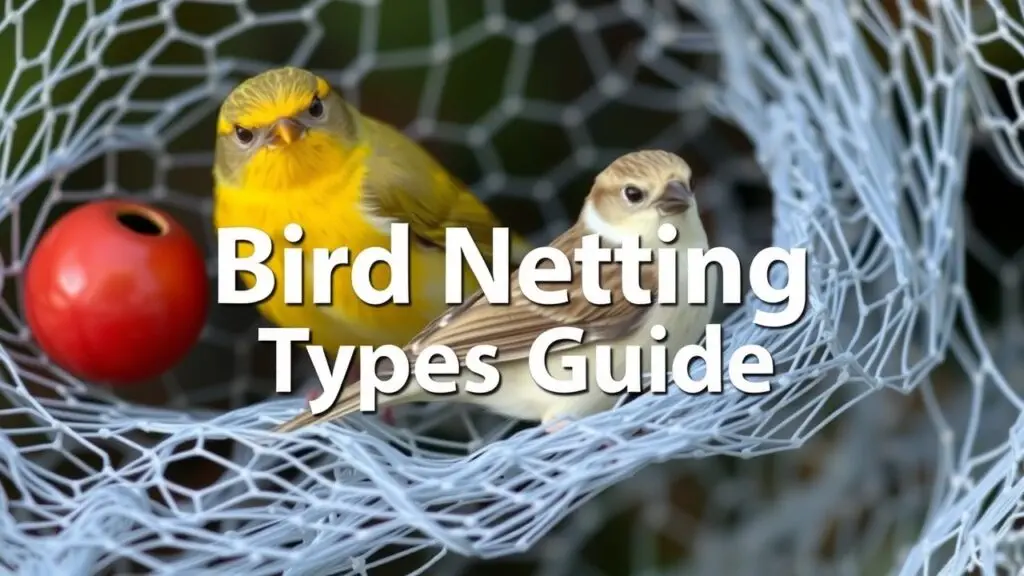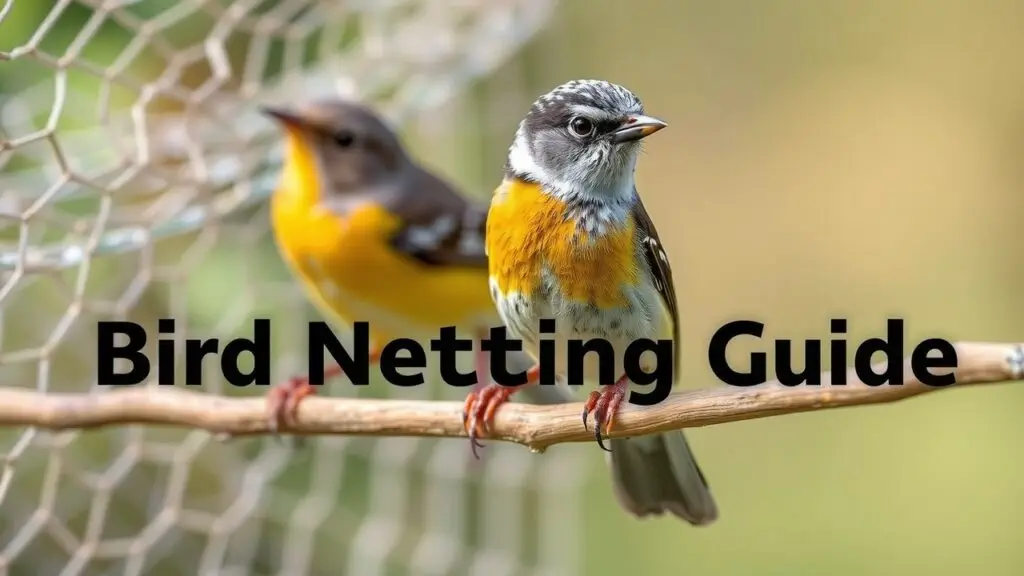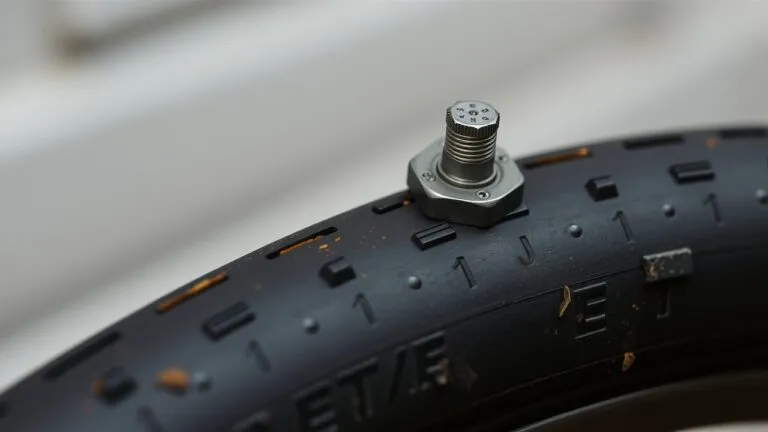Types of bird netting vary widely; this guide helps you choose the right net for your needs, covering installation and comparing types for commercial buildings, gardens, and homes.
What Is Bird Netting?

Bird netting is a type of barrier that keeps birds away from certain areas. It’s mainly used to protect crops from birds, stop nesting and droppings in buildings, and help manage wildlife in cities. The common materials for bird netting include nylon, polyethylene, and polypropylene.
Types of Bird Netting
There are several kinds of bird netting for different needs:
- Garden Netting: This light net is great for small gardens or flower beds. It keeps out smaller birds like sparrows.
- Orchard Netting: Heavier than garden netting, this one protects fruit trees from larger birds like crows and starlings.
- Commercial Bird Netting: Used in farms or warehouses, this strong net can handle rough weather while keeping various birds out.
- Wildlife Management Nets: These nets control certain bird populations safely, with bigger mesh sizes that let non-target birds through.
Why Choosing the Right Type Matters?
Picking the right type of bird protection netting is super important. Each use has its own needs; using the wrong one might not work or could even hurt the birds.
For example:
- Light nets may get blown away by strong winds when used with big birds like pigeons or gulls.
- Heavy-duty nets are tough but might block views if not put up properly.
Additional Considerations
When you’re choosing your bird netting, think about these key points:
- Environmental Impact: Different bird nettings can affect local ecosystems differently. So it’s good to choose options that cause less disruption.
- Legal Compliance: Check any laws about using and putting up bird nets in your area.
- Aesthetic Concerns: Think about how visible the nets will be at your home or business—some designs look better in gardens than others.
By thinking about these points along with material choice and what you need it for—like home gardens or farms—you can pick a solution that works for you and is safe for local wildlife too.
Types of Bird Netting Explained
Knotless Bird Netting vs. Knotted Bird Netting: Key Differences
When choosing bird netting, you’ll come across two main types: knotless and knotted. Each has its own benefits and downsides.
Knotless Bird Netting:
This kind is made from one single piece of material. It forms a smooth mesh that doesn’t have knots. Knotless bird netting is usually stronger and less likely to rip than knotted types. Plus, without knots, there are fewer chances for birds to get stuck, which makes it safer for wildlife. It’s great for big areas like orchards and vineyards where you need bird protection but also care about looks.
But it can cost more to buy knotless netting. You also have to be careful when putting it up. If not handled right, it could get damaged easily.
Knotted Bird Netting:
This netting has a mesh design held together by knots at each spot where the materials cross. Knotted bird netting is often heavier and very strong. It can stand up well against strong winds or heavy rain, making it good for gardens or small crop areas where you need solid protection.
However, the knots can make weak spots over time, leading to rips if not checked often. Also, sometimes birds can get caught in the knots.
UV-Stabilized vs Non-Stabilized Options
When picking bird netting, consider if you want UV-stabilized or non-stabilized options:
UV-Stabilized Options:
These nets have special ingredients that help protect them from sun damage. This makes them last a lot longer—often several years! They’re super useful in sunny places where lots of sunlight could ruin other kinds of materials quickly.
Non-Stabilized Alternatives:
These nets usually cost less upfront but won’t last as long under the sun. This could mean needing to replace them more often, which might end up costing more in the long run.
So, going for UV-stabilization is usually worth it since they hold up better and need less upkeep than non-stabilized choices.
Extruded Plastic vs Woven Mesh Design
Bird nettings come in two main designs: extruded plastic types and woven mesh types.
Extruded Plastic Types:
These nets are light and easy to handle when putting them up. They offer enough protection from birds when used correctly.
Woven Mesh Designs:
These nets are known for being tough because they use interlaced fibers instead of being shaped by molding like extrusions do. They’re really strong and work well in high-wind areas or places that need extra strength due to bad weather like hail or falling branches.
Choosing between these designs depends on what your specific needs are!
How Does Mesh Size Impact Effectiveness?
Mesh size is super important when it comes to bird netting. Different birds need different mesh sizes to keep them away or out of certain areas. Smaller mesh sizes work best for tiny birds like sparrows and finches. On the other hand, larger meshes help keep out bigger birds such as pigeons and crows. It’s all about finding a good balance between being able to see the net and keeping birds away.
- Small Mesh (e.g., 5mm): This size is perfect for small pest birds.
- Medium Mesh (e.g., 15-17mm): Good for a mix of medium-sized birds.
- Large Mesh (e.g., 19mm): Works for larger birds but can let smaller ones through.
When picking bird netting, think about how visible it will be in the area where you place it. Also, consider if the look of the net matters to you.
Choosing the Right Mesh Size by Application
Choosing the right mesh size really depends on what you are using it for:
- Gardens: If you’re dealing with small pests like sparrows or finches that want to eat your plants or fruits, go for fine meshes around 5-10 mm to stop them from getting in.
- Orchards/Vineyards: To protect fruit trees, use slightly bigger openings (around 15 mm). This keeps larger birds out while still letting air flow for plant health.
- Commercial Use: In places like warehouses or loading bays where lots of different bird types might be a problem, a stronger option with tougher materials and varied openings could work better.
Having visual guides can help show which mesh sizes fit best in different situations. This way, you can make sure your plants are safe from bird damage without harming other wildlife.
Bird Netting Materials: A Detailed Comparison

Polyethylene
Polyethylene bird netting is light and strong. It has great UV resistance, which helps it last longer in the sun. This means it works well for outdoor use. Plus, it is flexible, making installation a breeze. You can use it to protect fruit trees and vineyards from pesky birds.
Applications include:
- Fruit Tree Protection: It keeps birds from stealing your ripe fruit while still letting sunlight and rain through.
- Vineyard Use: The netting covers grapevines, stopping birds from pecking at grapes during harvest time.
Nylon
Nylon bird netting is known for its strength and weather resistance. It’s heavy-duty, meaning it can handle tough conditions without tearing. The material also has some stretch, so it can survive bumps without getting damaged.
Suitable applications include:
- Commercial Use: Farms often choose nylon netting for large operations that need durability.
- Residential Gardens: Home gardeners pick nylon to protect plants from birds while helping their gardens grow.
Polypropylene
Polypropylene bird netting is a cost-effective choice that doesn’t skimp on durability. It’s lightweight, making it easy to handle during setup. Even though it’s light, polypropylene still provides good protection against birds.
Appropriate uses include:
- Agricultural Settings: Farmers love this option because it’s affordable and does a great job keeping pests away.
- Small-scale Gardening: Gardeners find it perfect for small plots or individual plants without spending too much.
Stainless Steel
Stainless steel bird netting is super strong and resists corrosion. This makes it great for special situations where long-lasting materials are needed. While it costs more than other types, its toughness means it will last longer in tough environments.
Niche applications include:
- Warehouses or Industrial Buildings: Businesses use stainless steel nets in places that need solid protection against larger animals.
- Specialized Enclosures: For unique projects needing high security from wildlife or debris, stainless steel works well due to its lasting power.
Choosing the Right Bird Netting: A Decision Guide
Decision Tree/Flowchart
When you want to pick bird netting, think about what you need first. Here’s a simple guide to help:
- What is your application type?
- Gardens: Choose lightweight options like polyethylene or knotless designs. They are easy to use.
- Commercial Use: Heavy-duty materials like knotted nylon work better for larger areas.
- What is your budget?
- Cost-effective Options: Look for affordable mesh types that last long enough.
- Long-term Investment: Spend a bit more on higher-quality nets for better protection.
- How long do you need the netting to last?
- For short-term needs (like seasonal crops), lighter materials will do.
- For year-round use, pick UV-resistant and durable choices.
This flowchart helps make your decision easier by focusing on what matters most.
Specific Examples of Netting Type Recommendations
Different situations need different kinds of bird netting:
- To keep birds away from cherries, use lightweight polyethylene or knotless designs. They are easy to set up and won’t harm the fruit.
- To stop pigeons from damaging buildings, heavy-duty knotted nylon is a strong choice that protects well.
- Think about mesh size too; smaller openings (like ¾ inch) can block sparrows while larger sizes (up to 2 inches) might let in crows but keep smaller birds out.
These examples show how the right bird netting can help with specific problems.
Budget Considerations in Bird Net Selection
Bird netting costs can vary a lot depending on what you choose:
- Lightweight polyethylene nets often range from $0.10 to $0.50 per square foot.
- Heavy-duty knotted nylon usually costs between $0.50 and $1 per square foot, but they last longer.
Think about spending a bit more now to save later on replacements when making your choice. Knowing these prices helps you find good solutions within your budget while keeping birds away.
Lifespan Expectations Based on Material Choices
What material you choose affects how long your bird netting will last:
- Polyethylene nets generally last about three years before UV light makes them wear out unless they have special coatings.
- Knotted nylon lasts longer, usually five years or more, making it great for places where replacing nets often would be hard.
- Weather also matters; places with strong sun or extreme heat may shorten lifespans no matter the quality.
Picking the right materials based on where you’ll use them helps ensure they work well over time without needing constant replacements.
Environmental Impact & Compliance Issues
When choosing bird control solutions like nets, think about their environmental impact:
- Choosing biodegradable or recyclable materials is better because it helps during disposal when they’re done being useful.
- Also, check local rules about how to install nets; some areas have guidelines that protect native wildlife during nesting seasons.
Thinking about these things supports nature and shows responsible wildlife management practices.
Choosing the right bird netting means looking at several factors like what you need it for, how much you can spend, how long it should last, and following local rules. By checking these details and following specific recommendations based on different situations—whether it’s a garden needing light coverage or a big commercial space needing stronger defenses—you can effectively keep birds away while being safe around wildlife too.
Bird Netting Installation & Best Practices

Safe Installation Techniques
Installing bird netting safely is super important to keep both birds and the environment safe. Here are some tips:
- Secure the net tightly: Make sure there are no loose spots where birds can get caught. Use clips or ties meant for bird nets to hold it firmly in place.
- Prevent sagging: If the net hangs down, birds might get tangled. So, pull the net tight, especially over trees or gardens.
- Choose the right mesh size: Pick a mesh that matches the birds you want to keep out. Smaller holes can stop little birds while letting bigger ones pass.
- Use tensioning systems: These systems help keep the net tight across areas where you want to protect plants or structures.
- Check local laws: Before starting your DIY project, find out about wildlife protection laws in your area. If unsure, getting professional bird netting installation might be a smart idea.
Regular Inspection and Maintenance
Regularly checking your bird netting is key to keeping it effective. Aim to inspect it at least once a month, especially during busy bird seasons.
Look for any damage like tears or holes. If you see any, fix them right away so birds can’t get through. Also, if a bird gets trapped in the net, take it out quickly. This not only protects wildlife but also helps follow animal welfare rules.
Cleaning is also necessary. Remove leaves and branches from on top of the nets. Too much junk can weigh down sections and make them sag.
Responsible Disposal
When it’s time to toss out old or broken bird nets, follow your local rules on how to dispose of plastic stuff properly. Different places have different guidelines about this.
Check if there are recycling programs nearby that take old nets or fishing lines. Some groups even turn these materials into new products instead of letting them clutter landfills. By choosing responsible disposal methods, you can help reduce waste and stick to laws about managing trash.
Bird Netting Troubleshooting
Installation Issues and Solutions
When installing bird nets, you want them to work right. If your net sags or droops, it might be due to loose fittings or not enough support. Make sure all corners are tightly secured and consider adding more supports if needed.
To keep birds from getting tangled in your net, use good fasteners like zip ties or special clips made for outdoor use. This keeps everything tight and neat.
Maintenance Challenges
Regularly checking your nets is super important! Try to inspect them at least once a month, especially after bad weather like storms or high winds. Look out for signs of wear like fraying edges or little holes.
If you ever find birds stuck in your net, it’s key to act gently. Use gloves and try to free them carefully without causing harm.
Troubleshooting Common Problems
If your net gets tears over time from wind or animals, don’t panic! You can fix small holes with repair tape made for outdoor fabrics.
Sometimes, birds might not notice the net even if it’s set up properly. Check if the color of the net blends too much with the background. Making it more visible could help keep birds away.
Expert Advice on Bird Net Issues
There are times when calling in a pro is smart—like if you keep getting large groups of birds despite using nets or if you’re unsure about tricky installations around trees or buildings where access can be hard.
In short, taking care of your bird netting helps protect gardens and crops effectively while keeping the environment safe for our feathered friends!
Bird Netting FAQs
What is the best material for bird netting?
The best materials for bird netting include polyethylene, nylon, and polypropylene. Each material has unique strengths. Polyethylene is lightweight and UV-resistant. Nylon offers excellent durability. Polypropylene is a cost-effective option that still provides good protection.
How do I choose the right mesh size?
Selecting the right mesh size depends on the type of birds you want to exclude. Smaller birds like sparrows require a mesh size of 5mm or less. Larger birds such as crows or seagulls need larger openings around 15mm to 19mm.
What are the different types of bird netting?
Bird netting types include knotless, knotted, UV-stabilized, and extruded options. Knotless netting is smooth and less likely to tear. Knotted designs are strong but may develop weak spots. UV-stabilized nets resist sun damage better.
How do I install bird netting properly?
Install bird netting by securing it tightly to prevent sagging. Use clips or ties for a firm hold. Ensure no gaps allow birds to enter. Regularly check for wear and repair any damages immediately.
How long does bird netting last?
The lifespan of bird netting varies by material. Polyethylene typically lasts about three years, while nylon can last five years or more with proper care.
Where can I buy bird netting?
You can buy bird netting online through retailers like Amazon or Home Depot. Local garden centers and agricultural supply stores also carry various types of bird netting.
Overview of Bird Netting Options
- Stainless Steel Bird Netting: Highly durable and corrosion-resistant.
- Heavy Duty Bird Netting: Offers extra strength for commercial use.
- Lightweight Bird Netting: Easy to handle, perfect for gardens.
- Wildlife Safe Bird Netting: Designed to protect birds while deterring pests.
- Pigeon Netting: Specifically made to deter pigeons from buildings.
- Crow Netting: Effectively keeps crows away from crops.
- Black vs. White Bird Netting: Color affects visibility and aesthetic appeal.
- Mesh Size Regulations: Consider local regulations regarding mesh sizes for different applications.
- Net Visibility: Choose colors based on aesthetics and effectiveness in your area.
- Environmental Impact: Be mindful of sustainable materials that minimize ecological footprints.
Related Topics
- Types of bird netting materials
- Types of bird netting applications
- Types of bird netting mesh sizes
- Types of bird netting installation methods
- Types of bird netting maintenance practices
- Types of bird netting disposal methods
- Types of bird netting problems and solutions
- Types of bird deterrents (beyond netting)



Types of Bird Netting: A Complete Guide to Selection & Installation